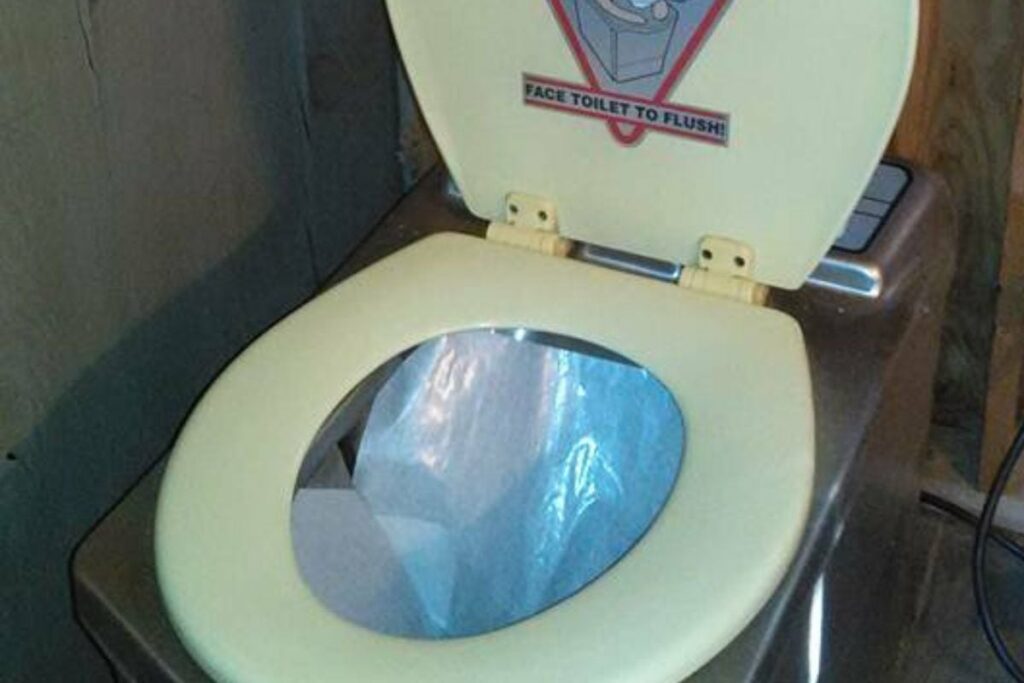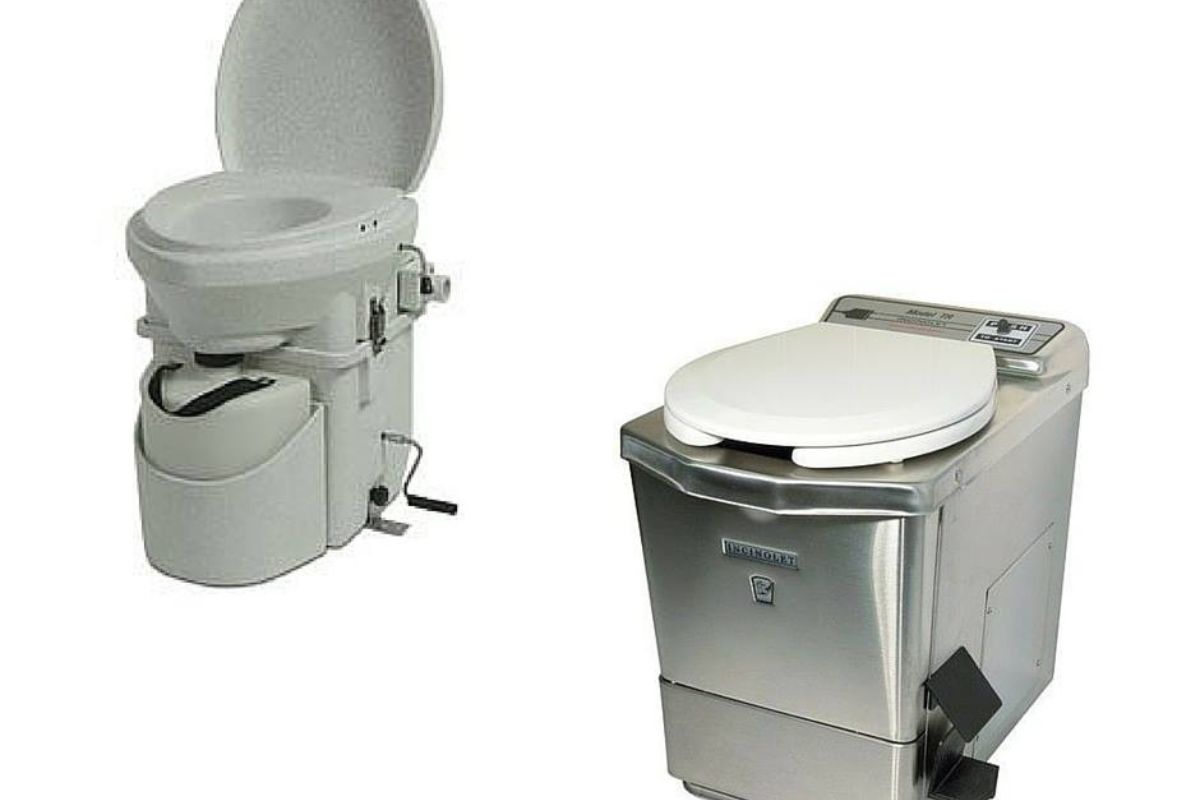A regular flush toilet that uses water can’t always be used. Particularly for RVs, camping, tiny houses, and homes that are off-grid. There are a range of different options for waterless toilets. In this article, I will explain, which is better a composting toilet or an incinerating toilet.
As a general rule, a composting toilet is better than an incinerating toilet. The main reason is that an incinerating toilet uses a high amount of electricity, whereas, a composting toilet uses next to no electricity. Everything else about both toilets is about the same.
To understand why a composting toilet is better than an incinerating toilet I will cover the key factors for each, which includes how often you need to empty it, what’s required to use it, whether they smell, and how easy they are to empty.
The smell of a composting toilet compared to an incinerating toilet
A composting toilet has next to no smell. The same is true of an incinerating toilet. There is a slight smell as an incinerating toilet begins to burn what you put in it. And a composting toilet has virtually no smell. Some people report that a composting toilet has less smell than a flush toilet when you go poop.
Both, a composting toilet and an incinerating toilet have a vent hose. This is the only part of a composting toilet that uses any energy.
How often you need to empty a composting toilet vs an incinerating toilet
On average, a composting toilet needs to be emptied far less often than an incinerating toilet. However, emptying an incinerating toilet is easier than emptying a composting toilet.

On average, a composting toilet can be used 60 to 80 times before it needs to be emptied. Whereas, an incinerating toilet needs to be emptied about once per week. A composting toilet will last 2 to 3 months before it needs emptying if it’s used by 1 person. To calculate for 2 people, divide the time by 2, and for 3 people divide the time by 3.
Which is the easiest to empty: incinerating toilet or composting toilet
Overall, an incinerating toilet is easier to empty but needs to be emptied more often. This essentially balances out how easy one is to empty over another. And therefore, they can be considered pretty much the same.
An incinerating toilet has a small tray about 2 inches deep (5 cm), and a foot (30 cm) wide. It gets filled with odorless ash. You unclip and pour it into the trash. A composting toilet on the other hand stores about a regular-sized bucket worth of waste.
Interestingly, by the time it comes time to empty a composting toilet, most of the waste has turned into dirt. Most people recommend when emptying a composting toilet to do it first thing in the morning when it hasn’t been used yet.
The urine bottle is separate on a composting toilet and needs to be emptied far more often. It’s recommended to keep two urine bottles, as there is nothing worse than needing to go pee when the urine bottle is almost full.
What’s required to use a composting toilet vs an incinerating toilet
There are a few things that you need to run a composting toilet and an incinerating toilet. Overall, both are very cheap. Composting toilets need to be filled with either peat or coconut core fiber.

Whereas, with an incinerating toilet you need a special paper sleeve to catch what you put into the toilet before flushing it into the incinerator. Some incinerating toilets also use propane gas (source).
Overall, the operating costs for the raw materials you need are very low, and neither is significantly more expensive than the other. The one issue with an incinerating toilet is you need a large amount of electricity to run the incinerator. After flushing something, the incinerator needs to run for approximately 8 hours.
During this time you can use the toilet more. However, it’s not possible to run an incinerating toilet on solar panels, or a similar off-grid setup. This makes it impractical for many situations where a waterless toilet is required. Such as in an off-grid home, camping, or an RV.
What Happens With the Waste in an Incinerating Toilet
An incinerating toilet is not common to have, and therefore many people are unaware of how an incinerating toilet works. Here’s a rundown of what happens to waste when it goes into an incinerating toilet.
As a general rule, the waste in an incinerating toilet turns to ash. This ash is thrown into the garbage. Or, can be put into the compost. After an incinerating toilet is used, you press a button that turns on the incinerator. It burns up whatever is put in it over 8 hours.
You can put a diverse range of things into an incinerating toilet, such as toilet paper, urine, poop, face wipes, and tampons. For this reason, you may not decide to put the ashes into the compost. As these products can contain chemicals.
Here’s a video that shows how an incinerating toilet works:
Do Incinerating Toilets Stink
A main concern with a toilet that doesn’t use water is the smell that can come due to the fact that waste is stored in the toilet. Waste has a strong odor that is very unpleasant. But, do incinerating toilets stink?
As a general rule, incinerating toilets do stink. But, only the fumes that come from the exhaust pipe which is installed on the exterior of a house or RV. There is virtually no perceptible smell indoors where the incinerating toilet is located.
Except for a minor burning paper smell when an incinerating toilet first starts. This is because it burns the paper liner that is required to be used for an incinerating toilet. Virtually all of the bad-smelling fumes that an incinerating toilet produces are blown out through the exhaust.
Virtually everyone who has an incinerating toilet reports that there is no smell where the toilet is located. However, the fumes when the toilet is turned on (incinerating) smell quite bad. Luckily, they are blown outside the house where they can be quickly carried away.

Amos Christen graduated with a bachelor’s degree in Interior Design from Drexel University — Philadelphia, PA. Since 2003, Amos has worked with top interior design professionals in this area, including architects and interior/graphic/lighting designers. As a skilled interior designer, Amos Christen is highly versed in fine arts and crafts and uses that to supplement his main area of expertise. He often publishes articles related to home décor on several websites, including Sprucetoilets.com, Sprucebathroom.com, and Mybesuitedhome.com. He also contributes to leading interior design magazines.
